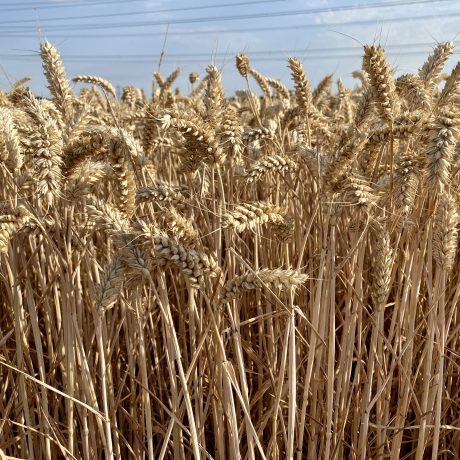Agronomy Update
Alice Andrews
May, 14 2024It has been a very difficult start to spring for winter wheat crops. Soil temperatures have taken a long time to warm up due to the amount of water in the soil. At this time of year, we would expect soils to be at around 12 degrees, and comparatively, in early May they were only 9 degrees. Furthermore, stressed crops have suffered from chemical damage and liquid fertiliser applications more than we would normally see.
We saw a trend at T1 timing that stressed crops suffered with early rust (yellow and brown) infection compared to fitter crops of the same variety. This trend has continued into T2 timing. The most robust T1 applications only held disease at bay for two weeks on rust susceptible varieties and in many situations, it has been necessary to apply a T1.5. The cost of this has ranged from £5/ha – £30/ha depending on whether an SDHI was required.
On a more positive note, the new varieties with strong disease profiles e.g. Extase, Palladium, Typhoon and Champion are looking very clean and healthy! This week has been the first main week for T2 applications, but wet weather has meant that not as much has been done as we would have liked. Next week is when most of T2 applications will be made. Due to the huge drilling window caused by the wet autumn. On some farms T2s will be applied across a 4-week period.
Surprisingly, septoria infection is nowhere near as bad as it could have been considering the amount of rain we have had (it is spread via rain-splash). Any of the strongest actives for septoria at T2 (fenpicoxamid, mefentrifluconazole, adepidyn) are suitable choices this year given current disease pressure. The decision over which product will largely be down to the variety and how much rust protection it requires.
With all of the above products, if the variety is susceptible to brown rust, or if there is active rust in the crop, an additional product should be used (tebuconazole, azoxystrobin, pyraclostrobin). You could even consider adding additional brown rust protection on the dirtiest varieties with some benzovindiflupyr.
Other current priorities include Sugarbeet herbicides, spring cereal treatments and protein applications on wheat. In my opinion if you are growing a rust susceptible variety, its T2 must take priority.
TOP TIPS:
- Check the scorings of your variety: they are performing true to score this year. If they are susceptible, protect them.
- Watch timings: do not rely on any applications to protect against rust for more than two weeks this season.
- If you have a susceptible variety or have active rust, add an active with eradicant action.
- Minimise stress in wheat crops caused by factors other than disease e.g. micronutrient deficiencies.






